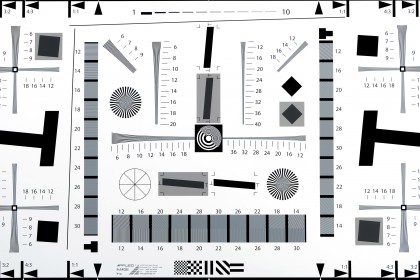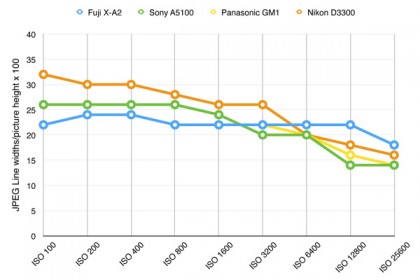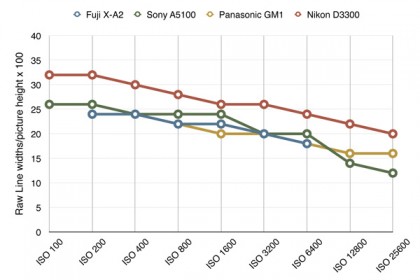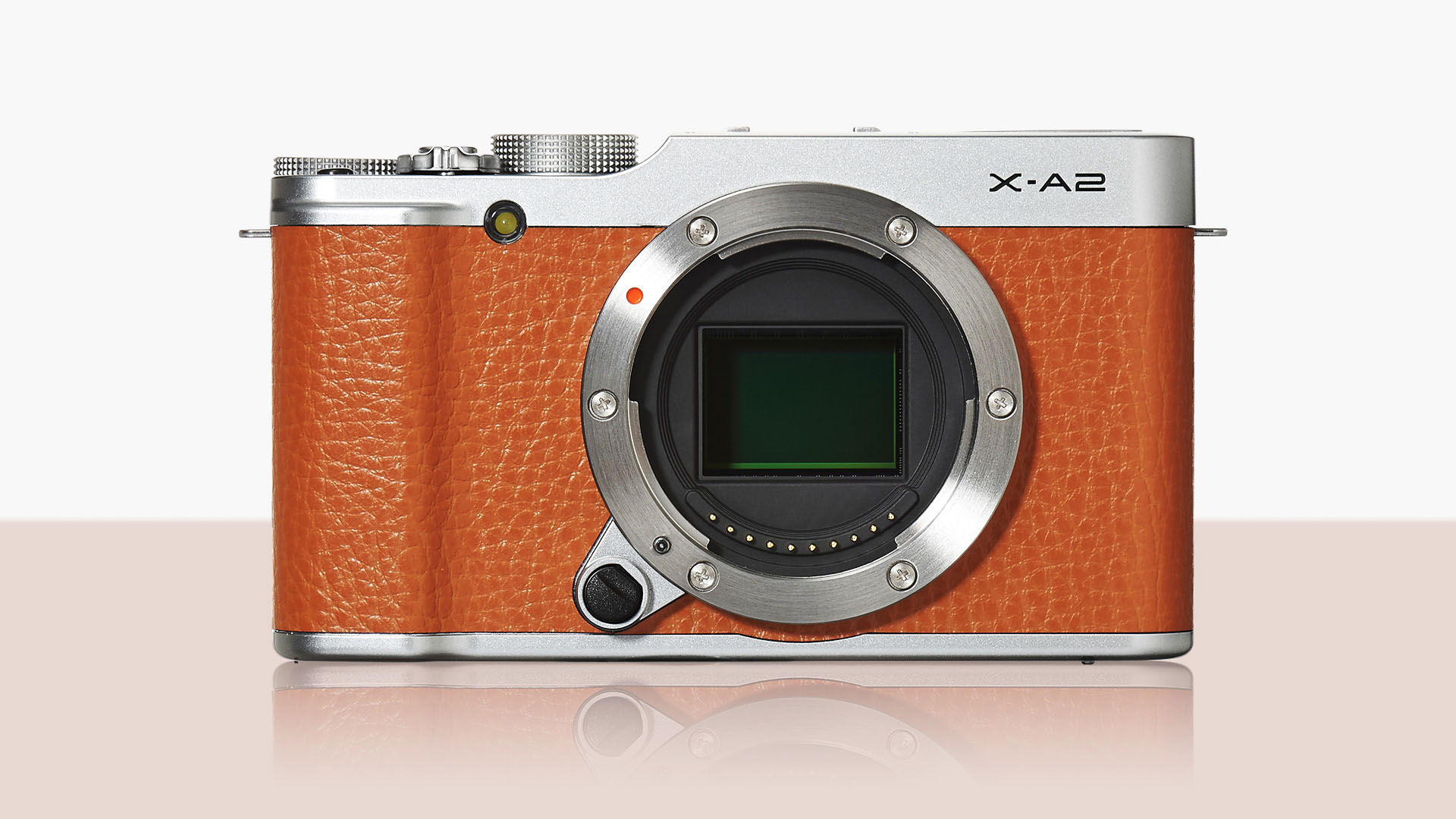Why you can trust TechRadar
We've carried out lab tests on the Fuji X-A2 across its full ISO range for resolution, noise (including signal to noise ratio) and dynamic range. We test the JPEGs shot by the camera, but we also check the performance with raw files. Most enthusiasts and pros prefer to shoot raw, and the results can often be quite different.
We've also picked out three of its chief rivals so that you can compare their performance directly.
• Sony A5100: Sony's entry-level compact system camera has a higher-resolution APS-C sensor than the Fuji X-A2, with 24 megapixels instead of 16.
• Panasonic GM1: The GM1 is tiny for a compact system camera, though the Four Thirds sensor is a little smaller than the APS-C sensor in the X-A2.
• Nikon D3300: The Nikon is a D-SLR rather than a compact system and has a larger body, but it's aimed at the same users and price bracket as the X-A2.
Resolution test chart
We test camera resolution using an industry-standard ISO test chart that allows precise visual comparisons. For a full explanation of what our resolution charts mean, and how to read them, check out our camera resolution test process.

Examining images of the chart taken at each sensitivity setting reveals the following resolution scores in line widths per picture height x100:

JPEG Analysis: While the 16Mp X-A2 can't compete with the 24Mp Sony A5100 and Nikon D3300, it captures a good level of detail and the mid tone contrast of its JPEGs give a good impression of detail.

Raw analysis: The results are closer with raw files. The D3300 is still a clear step above the rest, but the the X-A2 holds its own pretty well with the Sony A5100 and Panasonic GM1.
